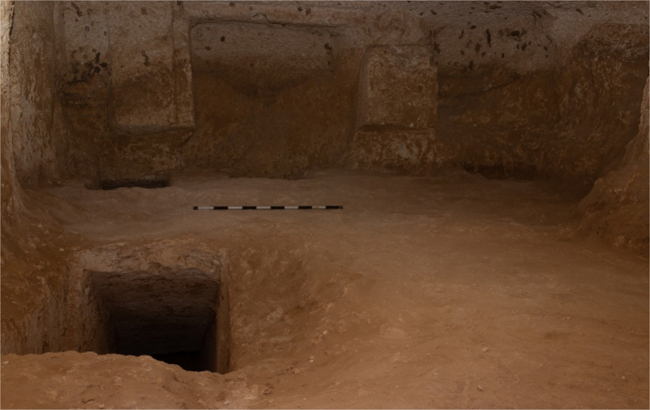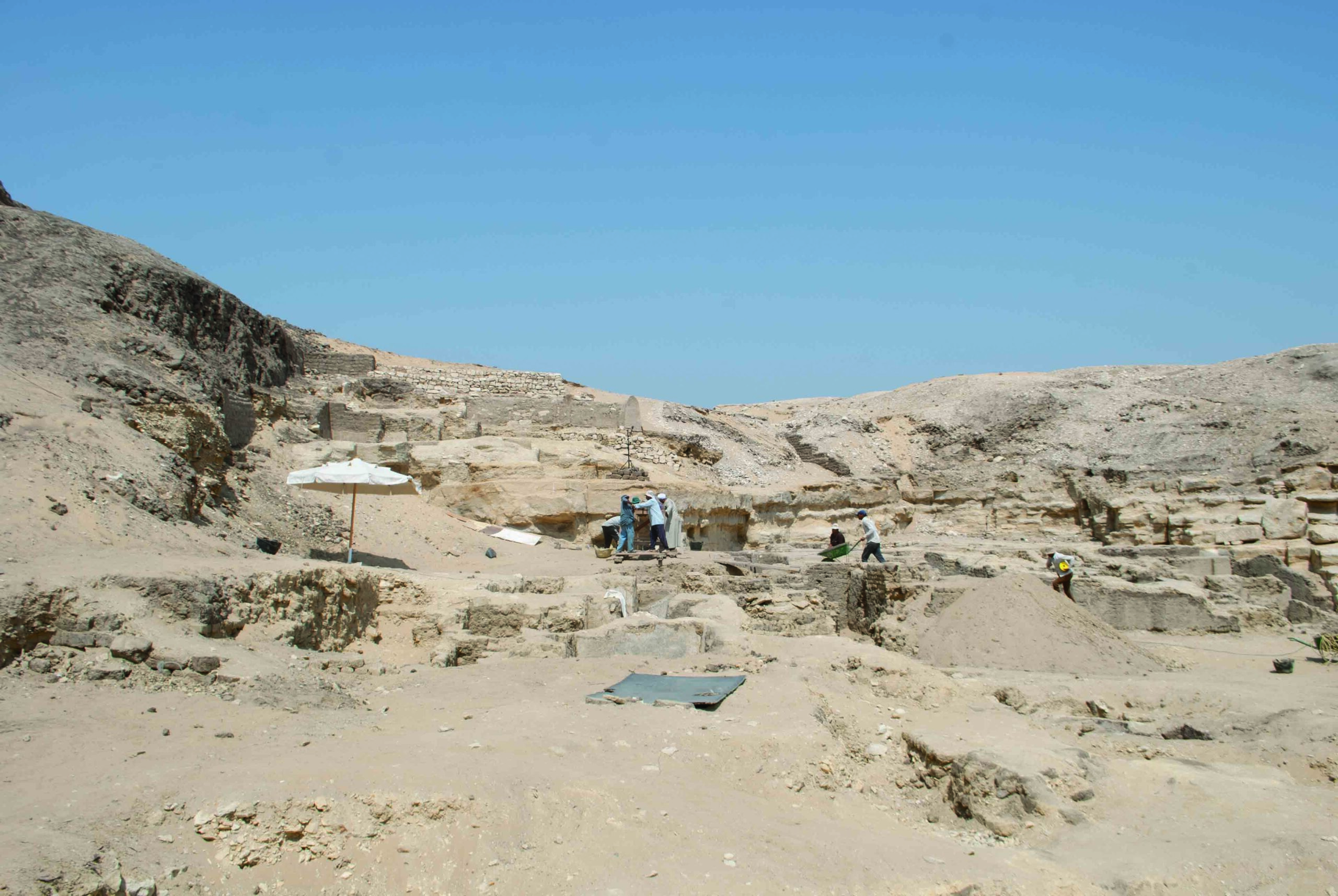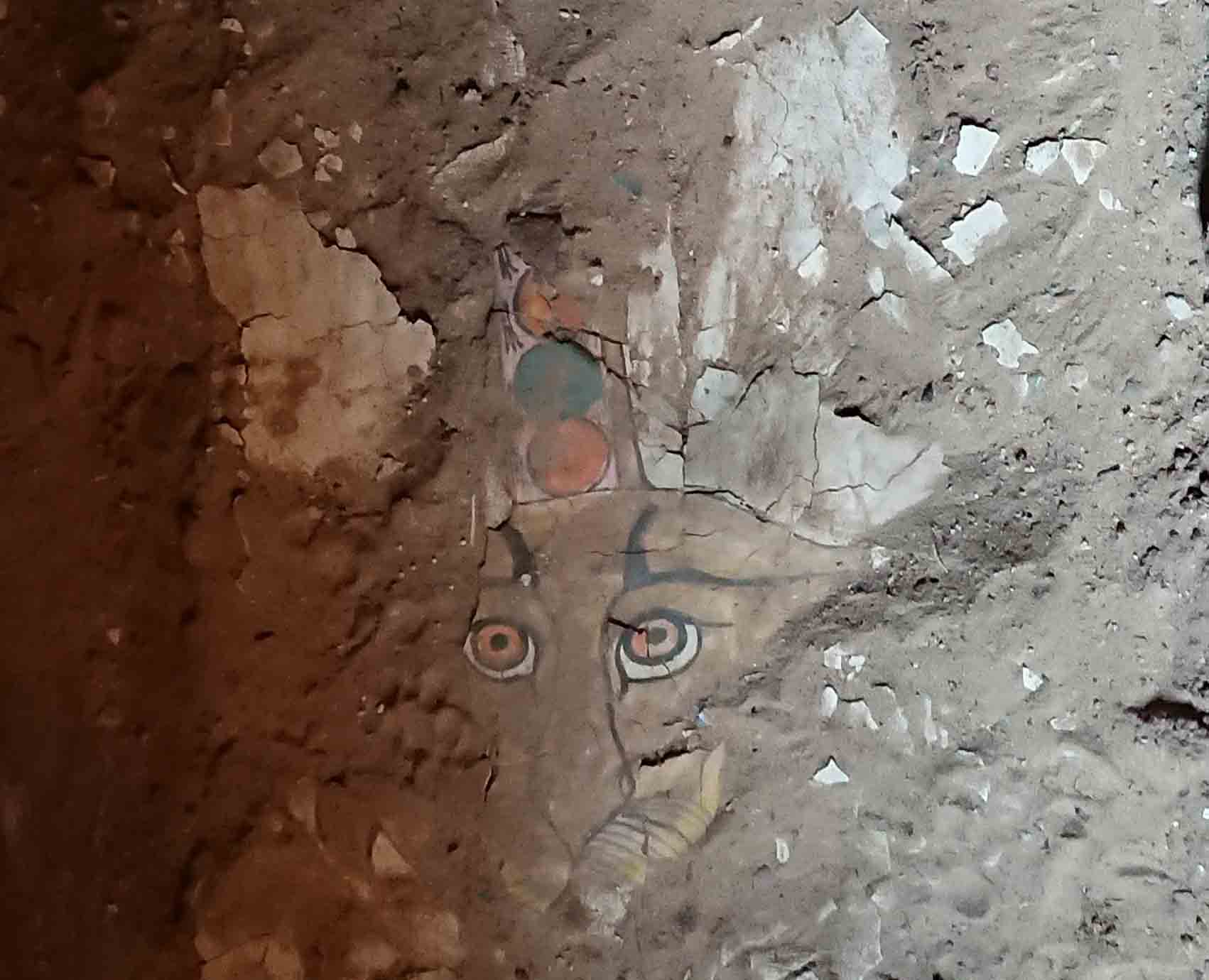
SOHAG, EGYPT—Ahram Online reports that a recent survey revealed a series tombs carved into a mountainside at the Al-Hamidiya necropolis, which is located in southern Egypt near the west bank of the Nile River. People buried here are thought to have been elites in the nearby administrative center of Akhmim. Mostafa Waziri of the Supreme Council of Antiquities said the tombs span a period of about 2,300 years, from the Old Kingdom Period to the end of the Ptolemaic period, and were built in a variety of styles, including single shaft tombs, tombs with several shafts, and sloping corridors leading to burial shafts. One Old Kingdom tomb consists of a sloping shaft that leads to a false door inscribed with hieroglyphs, a scene depicting the owner of the tomb performing sacrifices, and others making offerings to the deceased. An entrance leads to a gallery with a burial shaft to one side. The tomb was later reused, Waziri added. Miniature pots used for funerary offerings were recovered from the tombs, in addition to small spherical vessels, small alabaster vessels, pieces of a round metal mirror, and human and animal bones. To read about recent finds from Egypt's Saqqara necropolis, go to "The Mummies Return."










